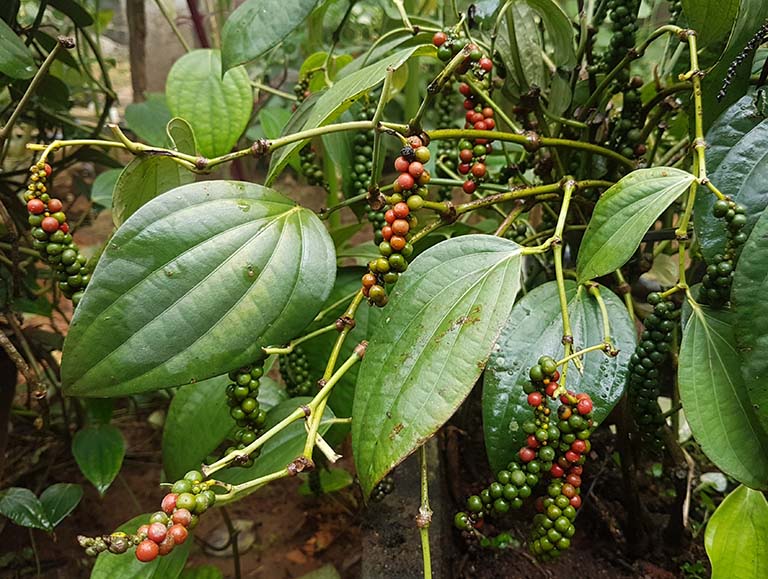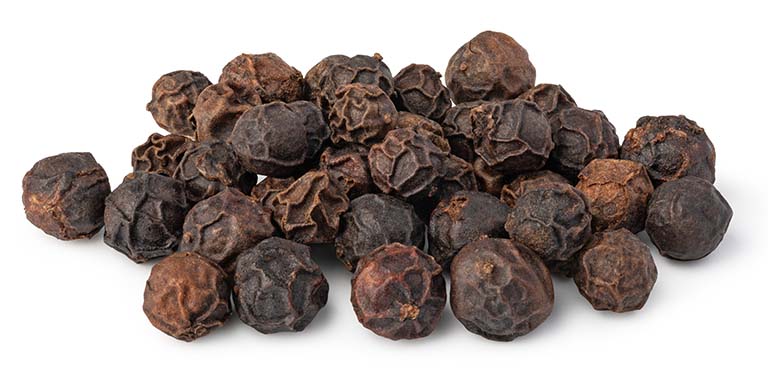Family: Piperaceae
Scientific name: Piper nigrum
Common name: Black pepper
Native of: Malabar Coast of India
Greenhouse location: Room A
Family: Piperaceae
Scientific name: Piper nigrum
Common name: Black pepper
Native of: Malabar Coast of India
Greenhouse location: Room A

Black pepper is one of the earliest spices to be used by people. The black pepper plant (Piper nigrum) fruit—called peppercorns—has been used since antiquity as a food flavoring and as a folk medicine. Although it was once considered a luxury item in Europe in earlier centuries, black pepper is now the most common spice worldwide.
Its aerial roots allow this woody vine to climb to a height of 33 feet. Piper nigrum requires partial shade and does well in locations with a long rainy season and fairly high temperatures. Its small flowers are arranged densely along slender spikes with around 50 blossoms on each spike, producing drupes (simple fleshy fruit that usually contains a single seed) of almost a quarter inch in diameter. Up to 30 fruiting spikes can be found on one stem.

Because the fruits tend to lose their pungency once they ripen and fall off, they are harvested before maturity—generally once a couple of the drupes near the base of the spike turn red. The whole peppercorns are boiled in water and dried before being ground into black pepper. The dark outer wall (pericarp) of the peppercorn is removed before grinding to produce less pungent white pepper.
India, where the black pepper plant is native, is one of the largest producers of the spice. Other major producers are Vietnam, Brazil, Indonesia, Sri Lanka, China, and Malaysia. During the early 2020's, Vietnam alone has been responsible for around one third of the world's peppercorn production, making it the largest producer and exporter of the spice.
